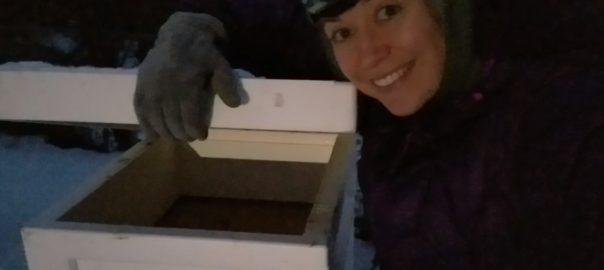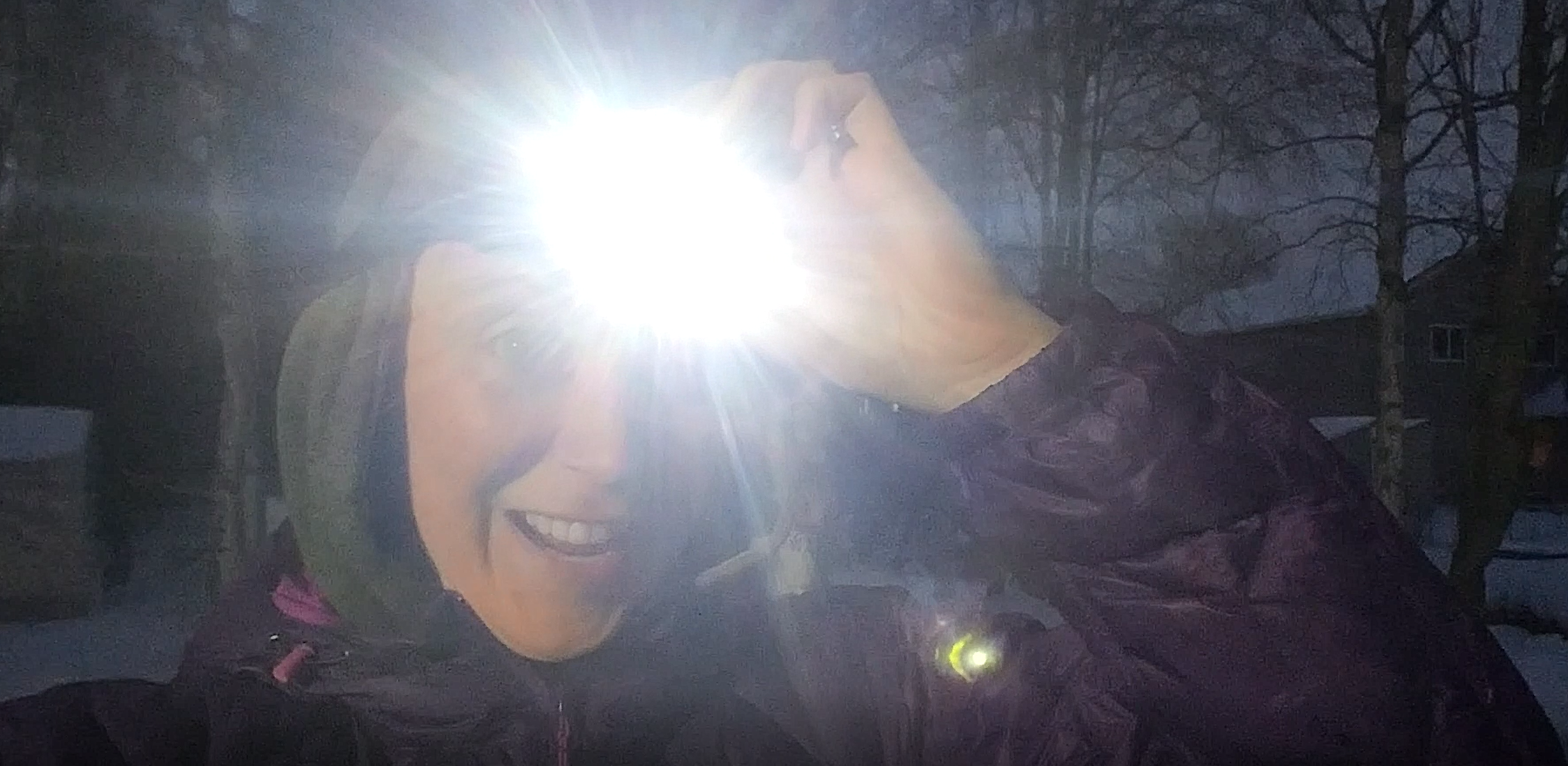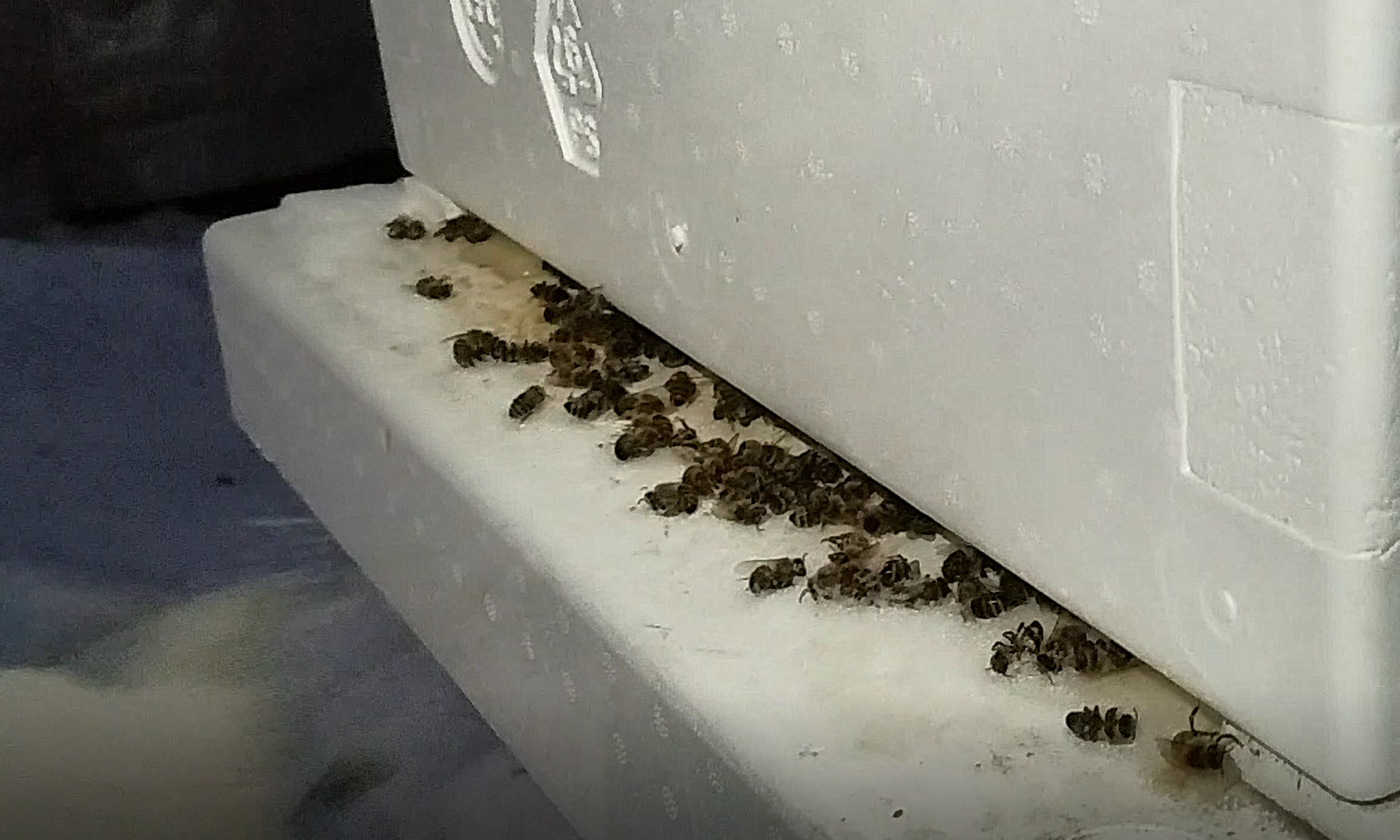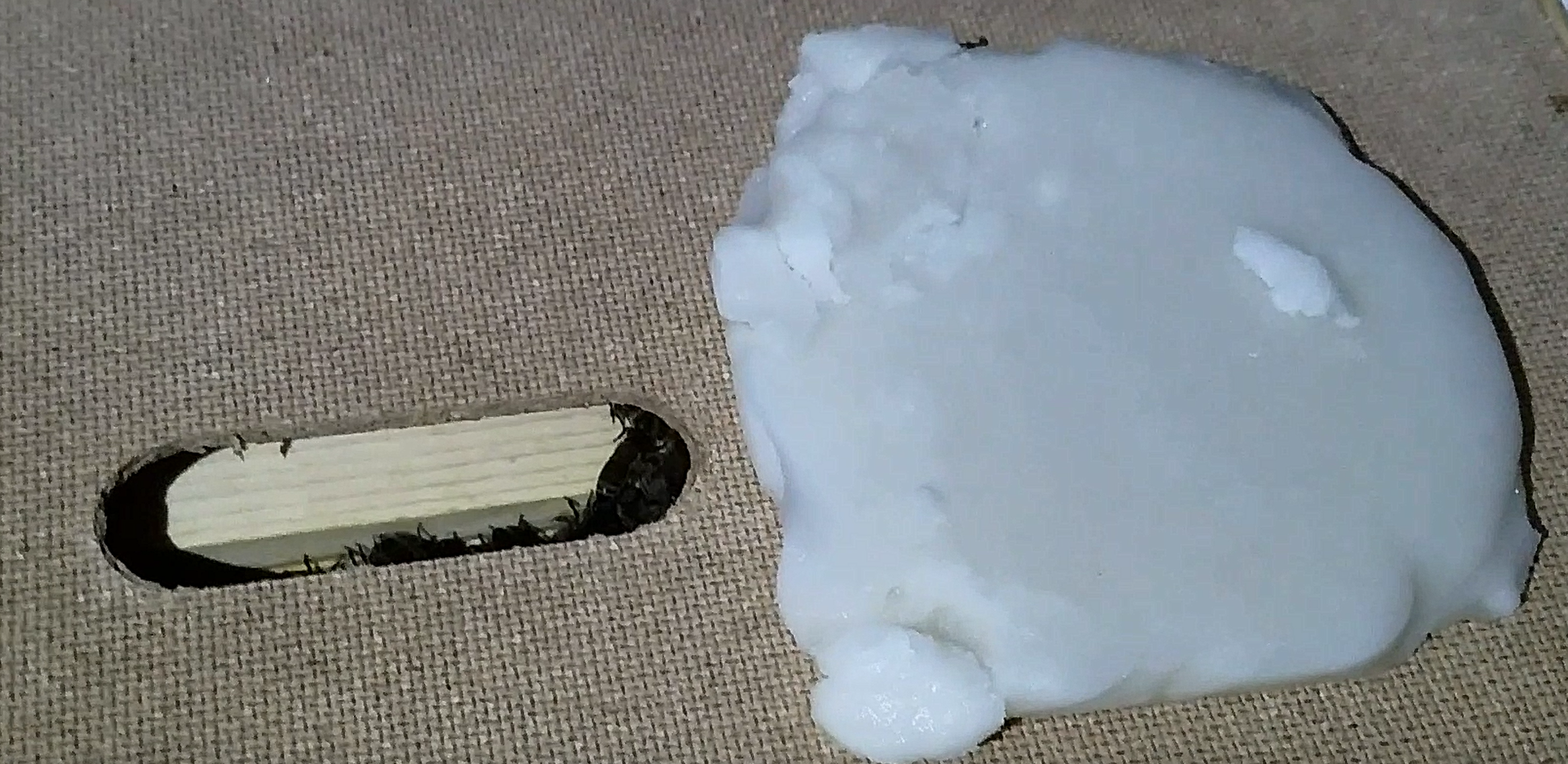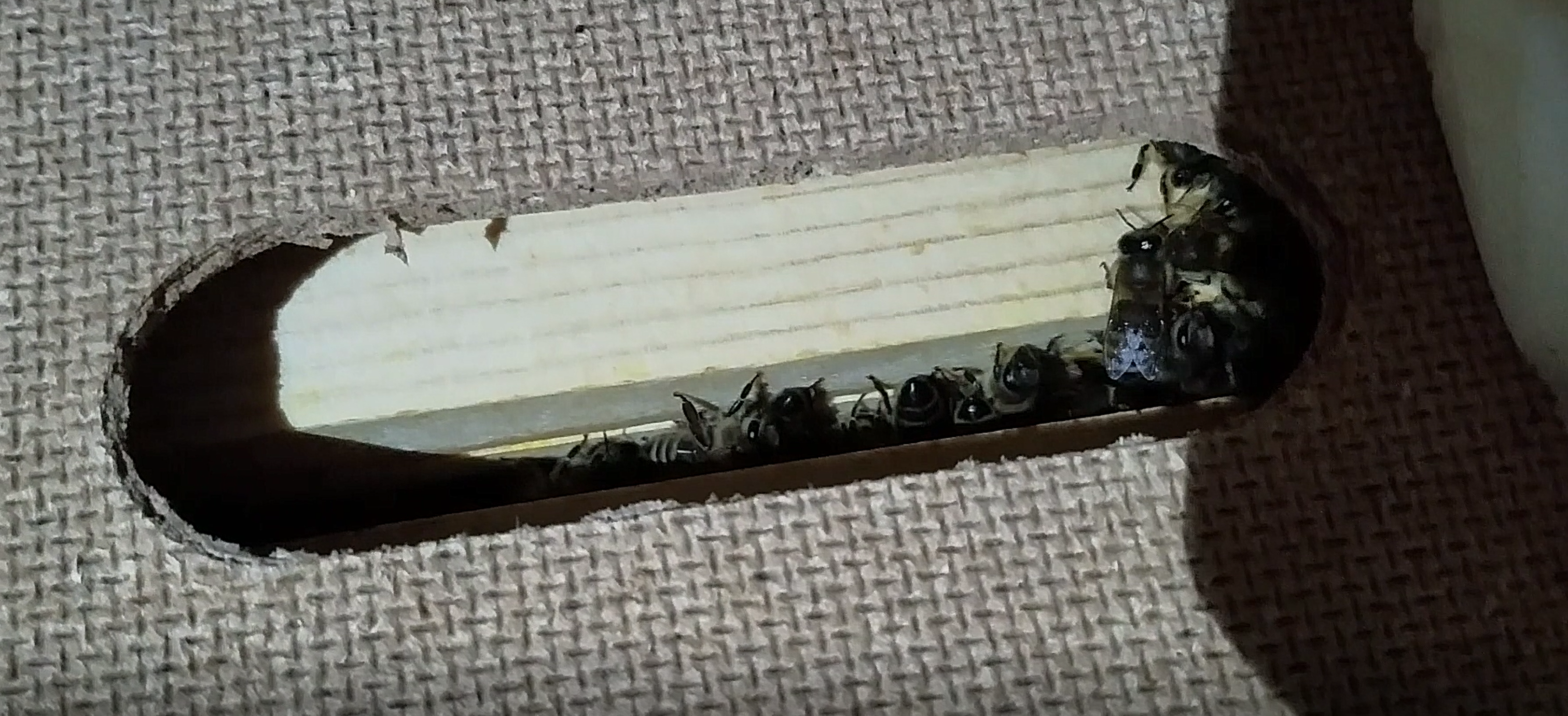On the last day of November, I went outside after dark for a winter beehive check. I wanted to see if the honey bees were still alive and if they needed more food.
This is our first winter with bees, and Alaska beehives don’t have high survival rates for wintering over. Alaska winters are extremely long, dark and cold. Many hives run out of food or breed diseases because bees can’t take cleansing flights (= poop. Bees don’t go to the bathroom in their hive).
Why wait until after dark to check the beehive?
For this follow-up November hive check, I strategically went outside after dark (with a headlamp) to avoid casualties of strong worker bees taking flight in an attempt to protect their hive, then quickly dying due to cold and confusion.
A few weeks earlier, after making bee fondant (sugary bee food), I chose a nice sunny winter day to check on the hive and add their food. In the summer, you generally want to wait for a warm, sunny, clear day to do hive checks because it’s not as much of a disturbance inside the hive if it’s warm and calm out.
But in the freezing winter, it didn’t occur to me that bees would still try to fly out at me – the “intruder” – even in 15 degrees Fahrenheit. Although I was able to add fondant bee food to their hive, sadly, many bees died by trying to fly in the frigid cold – something that could’ve been prevented if I hadn’t disturbed them.
Upon walking up to the hive, I noticed a lot of dead bees at the hive entrance and on the ground directly below the entrance.
I’ve heard that new beekeepers are sometimes alarmed by seeing dead bees outside the hive during winter months. Naturally, dead bees are much more noticeable on white snow in the winter than they are on tall grass in the summer.
Checking on the fondant (= bee food)
Inside of the hive (below the exterior lid, but still above the interior hive lid), the fondant looked untouched.
To give you a size reference, the hole to the left of the fondant is about 3″ wide.
Inside of the interior lid hole, I could see tons of tiny honeybees crawling around – there was life!
I wanted to stop and watch and enjoy them, the way I did throughout the summer, but instead I closed the lid. With snow on the ground, it’s too cold to leave their hive exterior lid open for long.
I closed the hive back up without adding or removing any fondant.
Alive & well – at least for now
If the bees needed the food, they’ve eaten the fondant. Since they’re not eating the food I added, they must still be doing okay living off of their honey reserves.
That said, it was still good to check. The last thing I want my bees to die from is starvation, because it’s so easy to prevent.
I’ll come back again in a few weeks to open the exterior lid and see how the bees are doing with food supplies.
(Here’s a video of the November 30th hive check, if you want to see it in action.)
